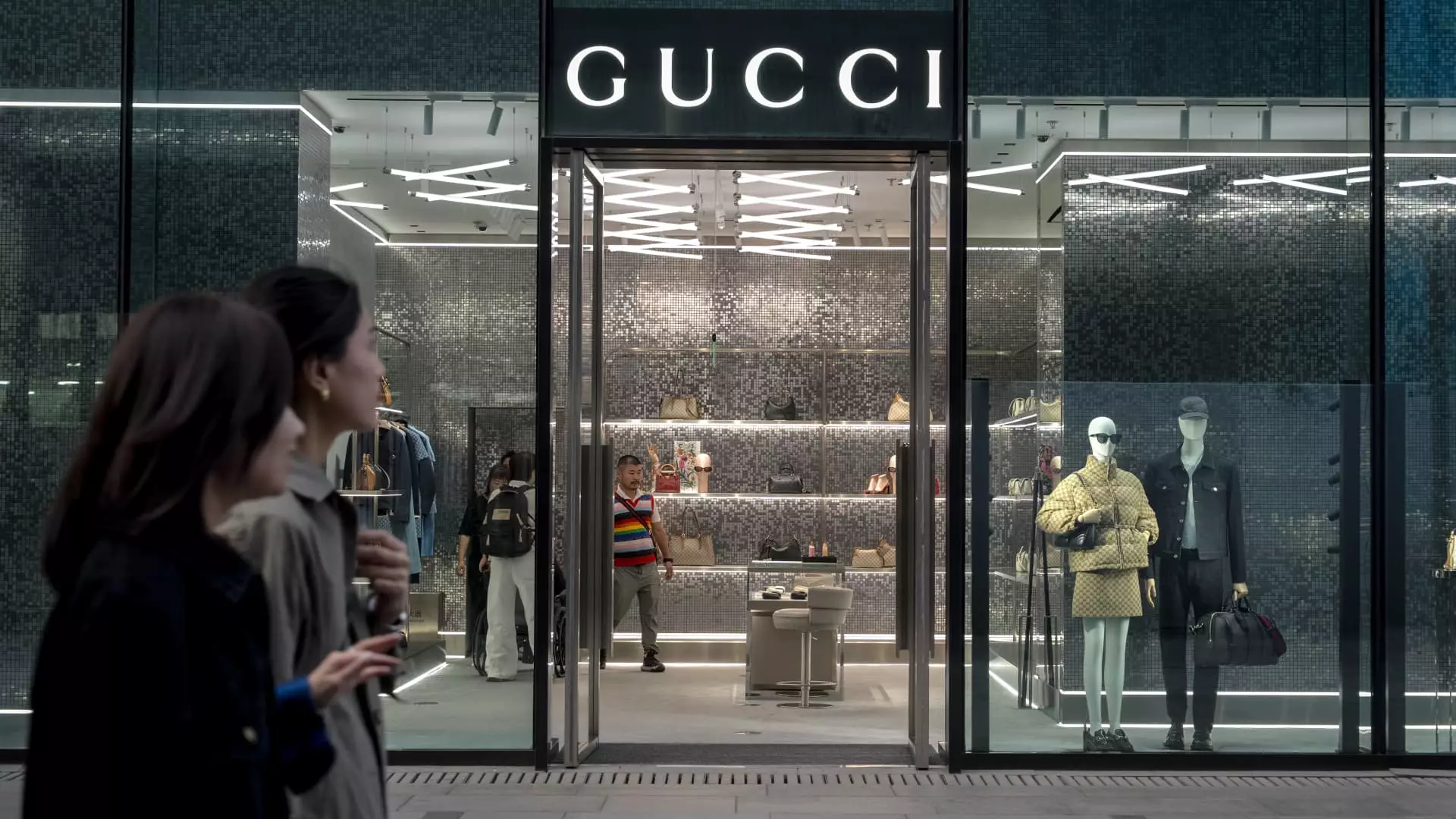Kering, a prominent name in the luxury goods sector, recently disclosed its fourth-quarter financial results, which reveal a mix of challenges and cautious optimism for the future. While the figures surpassed some expectations, they simultaneously painted a picture of a company grappling with significant declines, particularly in its flagship brand, Gucci. This downturn is emblematic of broader trends affecting the luxury industry, particularly in relation to shifting consumer preferences and economic pressures.
In its latest financial reporting, Kering revealed a 12% year-on-year drop in fourth-quarter revenues, amounting to €4.39 billion. This result managed to slightly beat the analyst forecast of €4.29 billion but still exemplifies a troubling trend, especially when considering that luxury brands typically thrive on consistent growth. A critical observation is Gucci’s plummet—recording a staggering 24% decrease in sales, contributing just €1.92 billion to the group’s overall performance for the quarter. Since Gucci represents nearly half of Kering’s total revenue, such a decline raises alarming questions about its brand strength and market position.
The overall financial health of the group also showed signs of strain in their yearly performance. Full-year revenues declined to €17.19 billion, a slight dip compared to the anticipated €17.09 billion—signifying that the company did not merely face challenges in the latter part of the year but struggled throughout the entire period. Operating income dwindled to €2.55 billion, nearly half of the previous year’s figure of €4.75 billion, showcasing the intense impact of current market conditions on Kering’s profitability.
In the wake of these results, Kering’s stock experienced a volatile trading day, initially climbing by 6% before settling at a more modest increase of 0.5%. This reaction underscores a sentiment among investors that, while the results were better than the worst-case scenario, they still reflect deeper systemic issues. CEO François-Henri Pinault acknowledged these struggles, framing them within a larger narrative of transformation and brand desirability. His commitment to evolving Kering’s portfolio and sustaining efforts to recover growth reflects a strategic pivot towards long-term brand health.
Despite these challenges, Kering reported modest sales improvements in particular markets, including Asia Pacific and North America. However, the lack of detailed market insights leaves analysts skeptical regarding the sustainability of this uptick. In the context of a sector suffering due to reduced consumer spending—amplified by the key Chinese market’s downturn—Kering’s prospects appear uncertain.
The Influence of Leadership Changes at Gucci
The luxury giant’s recent appointment changes are noteworthy, particularly the departure of Guido De Sarno, Gucci’s creative director, after less than two years. His exit represents a shift in the company’s direction, as it marks the company’s first major management change under new CEO Stefano Cantino. Analysts are questioning whether fresh leadership can reinvigorate a brand that was once viewed as a trendsetter but has recently struggled to resonate with consumers.
Industry expert Simone Ragazzi highlighted the cautious hopes pinned on the appointment of a new designer who could potentially revitalize Gucci’s fading appeal. However, the challenges of transforming consumer sentiment towards the brand cannot be understated. Given Gucci’s historical volatility and dependence on fashion trends, the company faces an uphill battle to regain its previous heights.
As Kering navigates this turbulent period, analysts stress the importance of strategic adaptations in response to evolving market dynamics. Luca Solca of Bernstein observed that improving operational profits across Kering’s other brands could provide a glimmer of hope amid ongoing challenges. However, the road to recovery will be closely monitored by investors, who are becoming more vigilant as brand loyalty shifts and market expectations fluctuate.
The luxury sector as a whole seems at a crossroads, and Kering’s trajectory will likely reflect broader industry trends. As Kering endeavors to orchestrate a comeback, the pressing question remains: Can the company leverage its rich heritage and creative prowess to assert itself in an increasingly competitive landscape? The coming months will be crucial not only for Kering but also for luxury brands aiming to adapt and thrive amid changing consumer behaviors and economic uncertainties.

